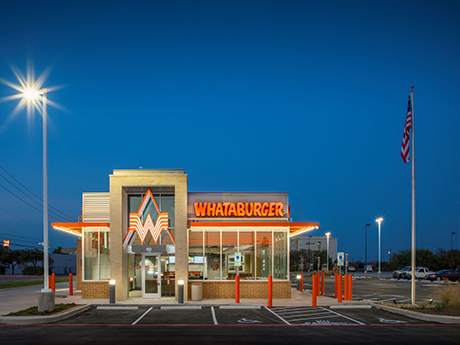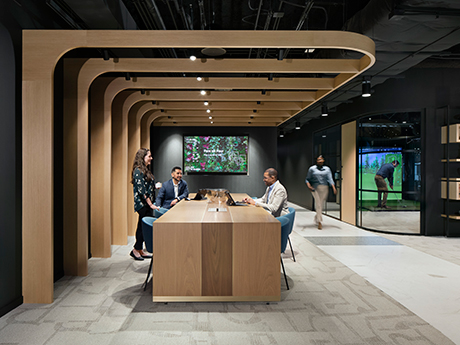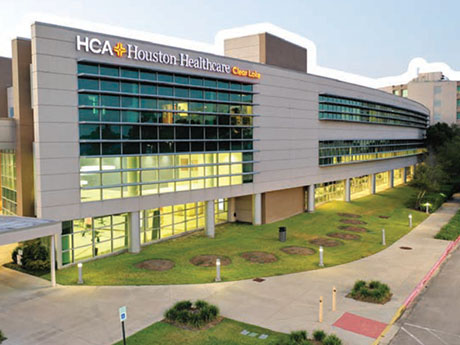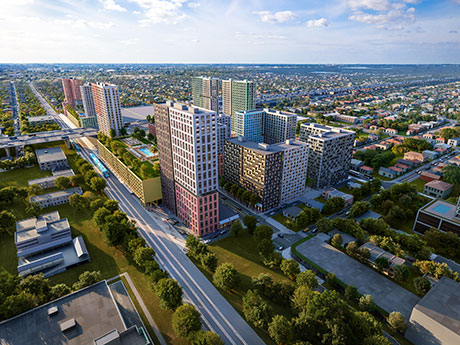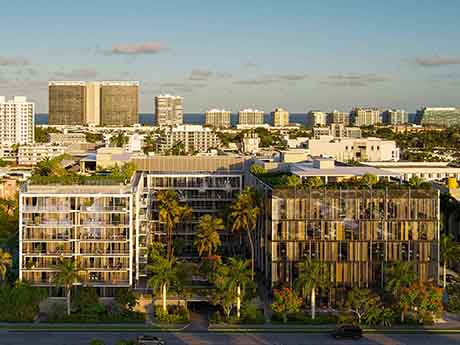AUSTIN, TEXAS — The concept of locating similar types of commercial real estate uses in close proximity to one another to allow those users to naturally develop synergies — clustering — is an age-old practice in certain asset classes like office, retail and hospitality. But the strategy can make sense for industrial real estate as well, especially in a time in which new subcategories of industrial uses are attracting capital and generating demand for space. Logistics and distribution users, for example, typically identify transportation costs as their top line item on the expense side of the ledger. Those companies have little choice but to pay top dollar for land or space near the rooftops of their existing customer bases so as to minimize transit costs. Editor’s note: InterFace Conference Group, a division of France Media Inc., produces networking and educational conferences for commercial real estate executives. To sign up for email announcements about specific events, visit www.interfaceconferencegroup.com/subscribe. Data center users cannot properly and profitably function without access to cheap electricity, hence the ability of Texas to land many of those deals via its deregulated power grid. Suppliers of smaller industrial parts and components are often supported by a handful of major manufacturers, and …
Market Reports
Charlotte: “The Queen City” named after Queen Charlotte, wife of George III, has been on a tear post-COVID with new and expanding retail concepts. Vacancy rates have hovered under 4 percent the last few years, with little signs of changing , according to research from Institutional Property Advisors (IPA). Much of that vacancy has occurred in less desirable markets, or in junior and big-box bankruptcies (JOANN, Big Lots, Party City, etc.) that are being snatched up as quickly as they become vacant. Tenants are desperate and clamoring for new locations to keep up with the strong residential growth (24,000+ new residents in the city limits in 2024 and 46,000 in the CSA), making charlotte the 14th largest city in the country, and 19th-largest CSA in terms of overall population. This factor combined with unemployment hovering in the low 4 percent range, plus household income growth has called for desperate measures to ID new space or weakness in the market. We as local experts have seen a slight uptick, over the past 12 months, in some “shadow inventory.” This occurring when an existing retailer or restaurant might be struggling with sales, or in partial default, and the landlord has the opportunity …
By Ben Azulay, Bradford Allen As summer approaches, I’m noticing Chicago’s downtown buzzing with renewed energy, and new signs that the Loop’s office market is heating up as well. In fact, research by my firm, Bradford Allen, suggests a Chicago office market nearing its bottom and poised for recovery. Improved leasing activity, strategic landlord adaptations and discounted sales are reshaping downtown Chicago’s market, particularly in high-demand submarkets like the West Loop and Fulton Market. Client certainty Office tenants in downtown Chicago are demonstrating increased confidence about their space needs, as reflected in significant expansion deals and long-term commitments. In fact, office expansions drove at least five of the 10 largest leases signed during the first quarter, including Stripe more than doubling its footprint at 350 N. Orleans from 45,000 to 89,000 square feet and Blue Owl’s second expansion at 150 N. Riverside from 27,000 square feet to 54,000 square feet. Large new leases included BP renewing 240,000 square feet at the CME Center, and Goldman Ismail signing a 43,000-square-foot deal at 191 N. Wacker. Leasing volume totaled 1.7 million square feet, up from 1.3 million square feet year-over-year, with the West Loop alone securing 916,760 square feet of leasing activity. …
By Taylor Williams The municipalities that comprise Houston’s southeastern suburban rings are on the rise, fueled not only by the larger population growth that has defined Texas in the 21st century, but also by expanded commerce and real estate development tied to the ports of Houston and Galveston. These municipalities vary tremendously from one to the next with regard to their size, both land- and population-wise. In addition, they possess varying degrees of maturity in terms of their microeconomies and real estate markets. Yet among the four cities in this region that Texas Real Estate Business spoke with for this story — Alvin, Webster, League City and Nassau Bay — some commonalities exist within their economic development endeavors. These include drawing on growth in the hospitality sector from the Port of Galveston’s thriving cruise business, as well as preparing for future real estate opportunities that will emerge from infrastructural projects, most notably the expansion of State Highway 99, known locally as Grand Parkway. As these cities work to expand their housing inventories, recruit new businesses and provide the ideal mixes of retail, restaurant and entertainment uses, they look to both traditional and new economic drivers. In doing so, they cultivate …
— By Anthony Johnson and A.J. Johnson of Pegasus Retail — Looking back on the market sentiment at the start of 2024, the mantra was “Survive ‘til 25.” Now, halfway through 2025, it’s clear that the record-breaking cap rate sales of 2021 and 2022 are firmly in the rearview. Speculative development is reserved for those with a generational outlook, and high interest rates are the new normal. While that may seem bleak, for those who’ve weathered the storm, it feels like a breath of fresh air. The market has reset. Seller and buyer expectations are realigning. Landlords and tenants are exploring new deals in a more stable environment. And smart developers are dusting off models and cautiously getting back to work. The construction hiatus of recent years has benefited owners of existing product. Tenants, fueled by Wall Street growth expectations, had to get creative. We now see many national retailers occupying second and third generation retail space that they’d historically passed in favor of shinier and newer projects. Many neighborhood centers that were 50 percent vacant at the onset of the pandemic are now close to fully leased. A surprising but welcome shift. This outcome, partly driven by the lack …
This year marks the centennial of several Miami municipalities, including Coral Gables and Hialeah, placing Miami-Dade County in a unique position: looking back on a rich history as a sunseeker’s playground, while charging full speed into a future where it is also a tech hub and financial powerhouse, with some dubbing the city as “Wall Street South.” From the first land rush in the 1920s to the post-pandemic migration surge a century later, Miami’s real estate story includes fascinating characters, iconic architecture, multiple booms and busts and not one but two great railroad eras — all contributing to the city’s allure as a place to live, and where institutional-quality capital is increasingly eager to invest. Population, job momentum Miami has enjoyed one of the strongest multifamily markets in the country for roughly the past decade. A blend of population growth and job creation forms the backbone of Miami’s resilient rental market. Miami-Dade County added over 64,000 net new residents as of July 2024, driven almost entirely by international newcomers. According to the U.S. Census Bureau, the county saw 123,835 international arrivals, offsetting the 67,000 locals who left. Behind that growth is an unprecedented business boom. Lured by Florida’s business-friendly environment …
By Lee Kiser, Kiser Group Multifamily real estate investment in the Midwest in 2025 presents a compelling opportunity, driven by strong fundamentals, favorable market dynamics and emerging trends. Here’s an overview of the key trends and outlook. Strong rent growth Midwestern cities are experiencing some of the fastest rent increases in the nation. Cleveland leads with a 5.1 percent year-over-year rent growth, while other metros like Chicago, Kansas City and Detroit rank among the top 10 for rent gains, outperforming the national average. This surge is attributed to steady demand and limited new supply, allowing landlords to continue raising rents. Much of the rent growth is due to declining construction activity. Nationally, multifamily construction is expected to decline by 11 percent in 2025, with completions projected to fall to 317,000 units. The Midwest has a significantly smaller pipeline than the national statistics, with only 3.4 percent of inventory currently under construction versus 6 percent nationally. Workforce housing stock The Midwest is recognized for its affordability, with monthly multifamily rents averaging $1,405, which is lower than the national average of $1,823 and more than 10 percent less than the Sun Belt average. Midwest transaction velocity is shifting toward Class B and …
— By Liz Claire of Avison Young — The Las Vegas retail market continued its strong performance in fourth-quarter 2024. Vacancy rates declined to 5.3 percent, marking a 200-basis-point drop from the fourth quarter of 2020. Strong absorption rates and healthy rent increases highlight the market’s resilience, even as growth has moderated since its peak in first-quarter 2021. Vacancy Declines and Strong Absorption Las Vegas experienced a significant increase in positive retail space absorption in fourth-quarter 2024, following eight quarters of minimal movement, with a total of 619,000 square feet absorbed. This surge was primarily driven by major developments, including the completion of the 500,000-square-foot BLVD retail project, which saw strong pre-leasing activity from prominent tenants like Adidas, H&M, Lululemon and In-N-Out Burger. Sustained high demand lowered the vacancy rate by 40 basis points from the previous quarter, further solidifying Las Vegas as a leading retail market. Retail Rents and Growth Trends Market-wide retail asking rents averaged $35.20 per square foot, with rents outside the high-priced resort corridor averaging $29.08 per square foot. Year over year, rents increased by 5.8 percent, significantly outpacing the national average rent growth of 3 percent. This steady rent appreciation demonstrates continued demand for retail space in …
Over the past five years, the national office market has faced its fair share of challenges: hybrid work reshaping demand, a surge in sublease spaces and rents stagnating in many cities. But Miami’s office market? It’s been a standout performer, and it’s soaring, not just holding its ground. From the onset of the COVID-19 pandemic, Miami began to separate itself from other major metros. While cities across the country struggled to coax tenants back to the office, Miami became a hotspot for companies eager to expand. What began as an influx of interest from financial firms, law practices and tech companies quickly evolved into a significant shift. These weren’t temporary moves — these were long-term leases and major investments. Since 2020, Miami-Dade has absorbed nearly 3 million square feet of office space. Unlike other cities where growth has fluctuated, Miami’s demand has been steady. Even as leasing slowed down nationally in 2023, Miami managed to hold strong. By 2024, leasing activity picked up again, and the first quarter of 2025 saw impressive absorption numbers. A major factor in Miami’s success is its disciplined approach to office development. While other markets overbuilt, leading to high vacancy rates, Miami’s new supply has …
— By Charles Van Geel of Cushman & Wakefield — Despite broader economic headwinds, Southern Nevada’s commercial real estate market continues to showcase remarkable resilience – especially in the office sector. The demand for high-quality office space remains strong in the Southwest and Summerlin submarkets, underpinned by a flight to quality and shifting corporate priorities toward top-tier environments. The bulk of today’s office activity is concentrated along the critical Interstate 215 corridor, stretching from Green Valley to Summerlin parkways. This corridor has become the heartbeat of the region’s office market. However, within this high-demand stretch, the availability of true Class A product (particularly in the Southwest submarket) is diminishing. Small blocks of space are becoming increasingly rare, while sublease opportunities along this corridor are practically nonexistent. Adding pressure to this is the fact that new construction is largely stalled. Speculative development is not economically feasible with the current market dynamics. Lenders are unwilling to fund projects unless developers can demonstrate significant preleasing commitments, often north of 50 percent. This has been a challenge, as preleasing activity in the broader market remains minimal. Still, the area has received a few recent high-profile deliveries. These include Downtown Summerlin’s 1700 Pavilion, Phase II of …



